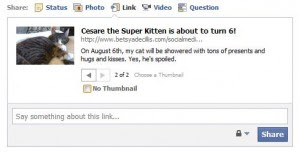For many people, the cold clear days of winter bring more than just a rosy
glow to the cheeks. They also bring uncomfortable dryness to the skin
of the face, hands, and feet. For some people, the problem is worse than just a
general tight, dry feeling: They get skin so dry it results in flaking,
cracking, even eczema (in which the skin becomes inflamed).
"As soon as you turn the heat on indoors, the skin starts to dry
out," Bonnie LaPlante, an esthetician with the Canyon Ranch resort in
Lenox, Mass., tells WebMD. "It doesn't matter if you heat your home using
oil, wood, or electricity. The skin gets dry."
1. Seek a Specialist
If you go to your local drugstore, you'll be hard put to find a salesperson
who can give you good advice. That's why going to an esthetician or
dermatologist even once is a good investment. Such a specialist can analyze
your skin type, troubleshoot your current skin care regimen, and give you
advice on the skin care
products you should be using.
But that doesn't mean you'll be stuck buying high-end products.
"Inexpensive products work just as well as high-end ones," says David
Voron, MD, a dermatologist in Arcadia, Calif. "In fact, the extra price you
pay for the expensive stuff is often just for packaging and marketing. What's
most important is how your skin responds to the product -- and how you like its
feel, not how much money you paid for it."
2. Moisturize More
You may have found a moisturizer that works just fine in spring and
summer. But as weather conditions change, so, too, should your skin care
routine. Find an "ointment" moisturizer that's oil-based, rather
than water-based, as the oil will create a protective layer on the skin that
retains more moisture than a cream or lotion. (Hint: Many lotions labeled as
"night creams" are oil-based.)
But choose your oils with care because not all oils are appropriate for the
face. Instead, look for "nonclogging" oils, like avocado oil, mineral
oil, primrose oil, or almond oil. Shea oil -- or butter -- is controversial,
because it can clog facial pores. And vegetable shortening, LaPlante says, is a
really bad idea. "It would just sit on the skin," she says. "And it
would be really greasy."
You can also look for lotions containing "humectants," a class of
substances (including glycerine, sorbitol, and alpha-hydroxy acids) that
attract moisture to your skin.
3. Slather on the Sunscreen
No, sunscreen isn't just for summertime. Winter sun -- combined with snow
glare -- can still damage your skin. Try applying a broad-spectrum sunscreen to
your face and your hands (if they're exposed) about 30 minutes before going
outside. Reapply frequently if you stay outside a long time.
4. Give Your Hands a Hand
The skin on your hands is thinner than on most parts of the body and has
fewer oil glands. That means it's harder to keep your hands moist, especially
in cold, dry weather. This can lead to itchiness and cracking. Wear gloves when
you go outside; if you need to wear wool to keep your hands warm, slip on a
thin cotton glove first, to avoid any irritation the wool might cause.
5. Avoid Wet Gloves and Socks
Wet socks and gloves can irritate your skin and cause itching, cracking,
sores, or even a flare-up of eczema.
6. Hook Up the Humidifier
Central heating systems (as well as space heaters) blast hot dry air
throughout our homes and offices. Humidifiers get more moisture in the air,
which helps prevent your skin from drying out. Place several small humidifiers
throughout your home; they help disperse the moisture more evenly.
7. Hydrate for Your Health, Not for Your Skin
If you've heard it once, you've heard it a thousand times: Drinking water
helps your skin stay young looking. In fact, it's a myth. Water is good for
your overall health and "the skin of someone who is severely dehydrated
will benefit from fluids. But the average person's skin does not reflect the
amount of water being drunk," Kenneth Bielinski, MD, a dermatologist in Oak
Lawn, Ill., tells WebMD "It's a very common misconception."
LaPlante agrees. "I see clients at the spa who drink their 10 to 12
glasses of water a day and still have superdry skin. It just doesn't do that
much."
8. Grease Up Your Feet
Yes, those minty foot lotions are lovely in the hot summer months, but
during the winter, your feet need stronger stuff. Try finding lotions that
contain petroleum jelly or glycerine instead. And use exfoliants to get the
dead skin off periodically; that helps any moisturizers you use to sink in
faster and deeper.
9. Pace the Peels
If your facial skin is uncomfortably dry, avoid using harsh peels, masks,
and alcohol-based toners or astringents, all of which can strip vital oil from
your skin. Instead, find a cleansing milk or mild foaming cleanser, a toner
with no alcohol, and masks that are "deeply hydrating," rather than
clay-based, which tends to draw moisture out of the face. And use them a little
less often.
10. Ban Superhot Baths
Sure, soaking in a burning-hot bath feels great after frolicking out in the
cold. But the intense heat of a hot shower or bath actually breaks down the
lipid barriers in the skin, which can lead to a loss of moisture. "You're
better off with just warm water," LaPlante advises, "and staying in the
water a shorter amount of time."
A lukewarm bath with oatmeal or baking soda, can help relieve skin that is
so dry it has become itchy, Bielinski notes. So, too, can periodically
reapplying your moisturizer. If those techniques don't work, go see a
dermatologist. "You may need a prescription lotion to combat the dry
skin," Bielinski says. "Or you may have a condition that isn't
simply dry skin and that requires different treatment."



 20s
20s






